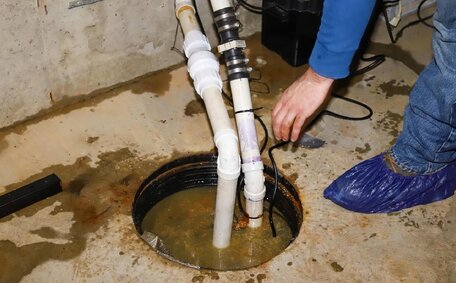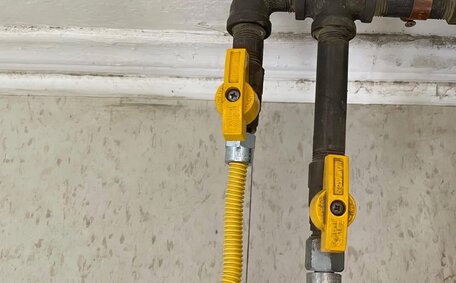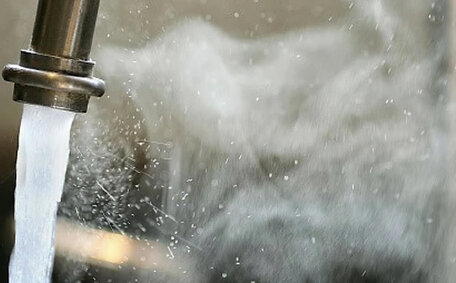Recognizing When The End is Near: Typical Water Heater Lifespans
Tank water heaters more than 10 years old and tankless units over 20 years could be approaching the end of their functional lifespan. Knowing that your hot water system is more than ten years old is key to predicting when it might require heater repair. As your water heater ages past its expected service life, the likelihood of malfunctions increases.
Beyond the 10- to 20-year threshold, common problems such as leaks, odd sounds, and heating failures often occur, signalling the need for an inspection. Preventative maintenance is essential to identify signs of water heater failure and possibly extend its life. Or, catching early signs could prevent your system from failing before catastrophic damage occurs.
Watching Temperatures: Insufficient or Inconsistent Hot Water
Variable water temperatures or a lack of hot water likely point to a faulty thermostat, hinting that repairs are necessary. This is often due to complications with the heating element or thermostat failing, pointing toward a potential need for water heater repair.
Faulty heating elements or thermostats can cause inconsistent water temperatures or complete heating failure.
Insufficient or constantly changing water temperature is a clear sign your water heater may be nearing its lifespan’s end. Promptly addressing these issues by replacing failing parts can extend your water heater’s life, preventing the need for a complete replacement.
Listening for Trouble: Strange Noises and Rumbling
Strange noises coming from your water heater, such as banging, hissing, or rumbling, are unmistakably clear indicators of upcoming failure. This is often caused by sediment buildup inside the heater tank, resulting in expansion and contraction noises as the heating elements switch on and off.
Mineral deposits gradually collect at the bottom of hot water heaters. Accumulated debris reduces both the efficiency and heating capability of the water heater.
These unusual sounds indicate the sediment buildup is impeding normal operation. Unchecked sediment can lead to ongoing stress on the water heater, hastening a breakdown. Notice signs your hot water storage tank is in distress from sounds or any unusual noises coming from the unit, like rumbling or banging.
Being On The Lookout: Leaks, Puddles, and Drips
A telltale sign of water heater failure is the occurrence of leaks. This Water heaters can suffer from minor leaks to major tank ruptures.
Unexpected cold water drips suggest loose fittings or worn seals.
It’s vital to regularly check areas prone to leaks, such as pipe joints and the tank’s exterior. If you discover moisture or pooling tank water around your base, inspect your gear closely for the source, including the TPR valve. Also monitor the pressure relief valve (PRV) which can leak due to age, damage, or excessive pressure.
Minor leaks from gasket wear may be patched, but major leaks indicate compromised tanks or internals. Prompt identification of significant leaks enables timely water heater replacement, averting potential water damage in your home.
A leaking heater should not be ignored, especially with ruptured tanks posing the risk of severe water damage.
Seeing Warning Signs: Rust, Sediment, and Discoloration
Rust in the water heater tank or on components usually signifies imminent heater failure. As the process of using hot water and sediment interact with the tank walls over time, rust begins forming through electrolysis. Eventually, this corrosion can eat entirely through the metal tank, causing leaks or tank rupture.
Rust-coloured water from your taps indicates a potential failure in your water heater. It indicates loose sediment and mineral buildup inside the tank is being disturbed and dispensed into the water supply throughout your home.
Temporary fixes for discoloured water or minor rust might address symptoms, but often underlying issues need resolving with a replacement. Left too long, corroded components lead to leaks, flooding, disruption of water service, and even potential water contamination.
If you notice cloudiness, strange odours/tastes or rust in your hot water, it might signal something wrong your water heater assessment. Catching a severely corroded tank early allows for proper containment and replacement before severe damage spreads through the home’s plumbing and structure.
Sniffing Out Problems: Odd Odors and Smells
An unsettling rotten egg smell emanating from your gas hot water system might be a harbinger of larger problems. Foul smells often mean corrosion, sediment buildup, or even bacterial growth inside the tank. While not immediately hazardous, neglecting to address water smells allows you to know what might escalate small issues into catastrophic failures.
If you detect odd smells, this is another sign it may be time to consider if you need to replace your water heater. A qualified plumber can isolate the cause by checking areas like the anode rod, inlet pipes, pilot light, or heating elements. The smell may signal failing components, mineral buildup, backflow contamination, or bacteria from water your.
Catching signs water heater before smells early provides the best chance at identifying and fixing the problem through draining or anode rod replacement. But left unchecked, contamination can lead to a system failing while unseen corrosion severely damages the water heater. Remember, safety comes first – especially if the smell suggests a water system failing, vacate the area and call emergency services immediately.
Taking Action: When To Call A Professional
Noticing any warning signs, such as insufficient hot water, strange noises, leaks, odd smells or issues traditionally associated with air conditioning, indicates it’s time to seek professional assistance. While basic troubleshooting steps can be attempted, certain hot water systems needs, such as repairs or resolving safety issues, require qualified assistance.
A sudden lack hot water issue may be resolved by adjusting thermostats or testing elements to ensure your new hot water is always available. But to effectively address the problem, one must check your signs to interpret, such as temperature fluctuations, sediment buildup, strange sounds or corrosion, which all require a deeper inspection. Likewise, minor drips might be patched temporarily, but leaks from the tank itself necessitate replacement.
Safety should also be the priority - any concerns about gas leaks, flooded equipment, ruptured tanks, or potential carbon monoxide require immediately shutting off the unit and calling emergency services. For less dire but still complex repairs, connect with our team for prompt assistance.
Calling in a professional as soon as problems appear gives the best chance at identifying issues early and preventing catastrophic failure.
Our team of experts can troubleshoot repair or replacement options and provide solutions to restore your water heater going functionality quickly. Don’t wait until there’s no hot water - acting on early warning signs can save thousands over full water heater replacement and ensure same day service.
For reliable, efficient water heater support throughout Sydney, contact our Kellyville Plumbing team today via email at [email protected] or call 1300 349 338. Contact us as soon as you identify potential failure signs in your hot water heater.
The Importance of Preventative Maintenance
Preventative maintenance is key to both extending the lifespan and detecting issues early, thereby preventing catastrophic failures. Simple upkeep such as flushing sediment or opting to replace water heater tank components like the anode rod can lengthen your water heater’s anticipated service life.
Flushing To Prevent Sediment Buildup
Sediment buildup from mineral deposits is one most common causes of water heater failure. Flushing the tank yearly—or more frequently for a tankless water heater—clears out these deposits before they can cause issues. It maintains heating efficiency, prevents noise issues that a faltering tank can produce, and protects internal components from stress and early wear.
Flushing only takes about 30 minutes. Simply turn off power, connect a hose to the drain valve, open the pressure relief valve, and run water through the tank. Take the time yearly to flush sediment, or every 6 months if you have hard water.
Replacing The Anode Rod
The anode rod attracts corrosion to prevent it from becoming an issue your heater tank faces. Eventually, an anode rod corrodes to the point where it no longer prevents rust effectively. Replacing the anode rod every three to five years can significantly extend your water heater’s lifespan.
Replacing this essential component, valued at around $20 and vital for preserving water pressure, can be done in less than an hour. Doing so maintains the protective barrier against corrosion, keeping efficiency high and leaks at a minimum. Include 'inspect or replace anode rod’ in your annual maintenance checklist.
Annual Maintenance Checks
Plumbing specialists recommend testing the TPR valve as part of your regular maintenance. Simple tasks like:
- Testing temperature/pressure valves
- Inspecting pipe fittings for drips
- Monitoring unusual sounds or smells
- Checking for loose wiring connections
Identify any hot water system issues early to avoid catastrophic failure. Kellyville Plumbing technicians can evaluate your heater’s performance and proactively address issues.
Avoid waiting for a total system failure or a lack of hot water. Regular preventative maintenance not only lengthens the life of your water heater but also saves money by circumventing expensive replacements.






